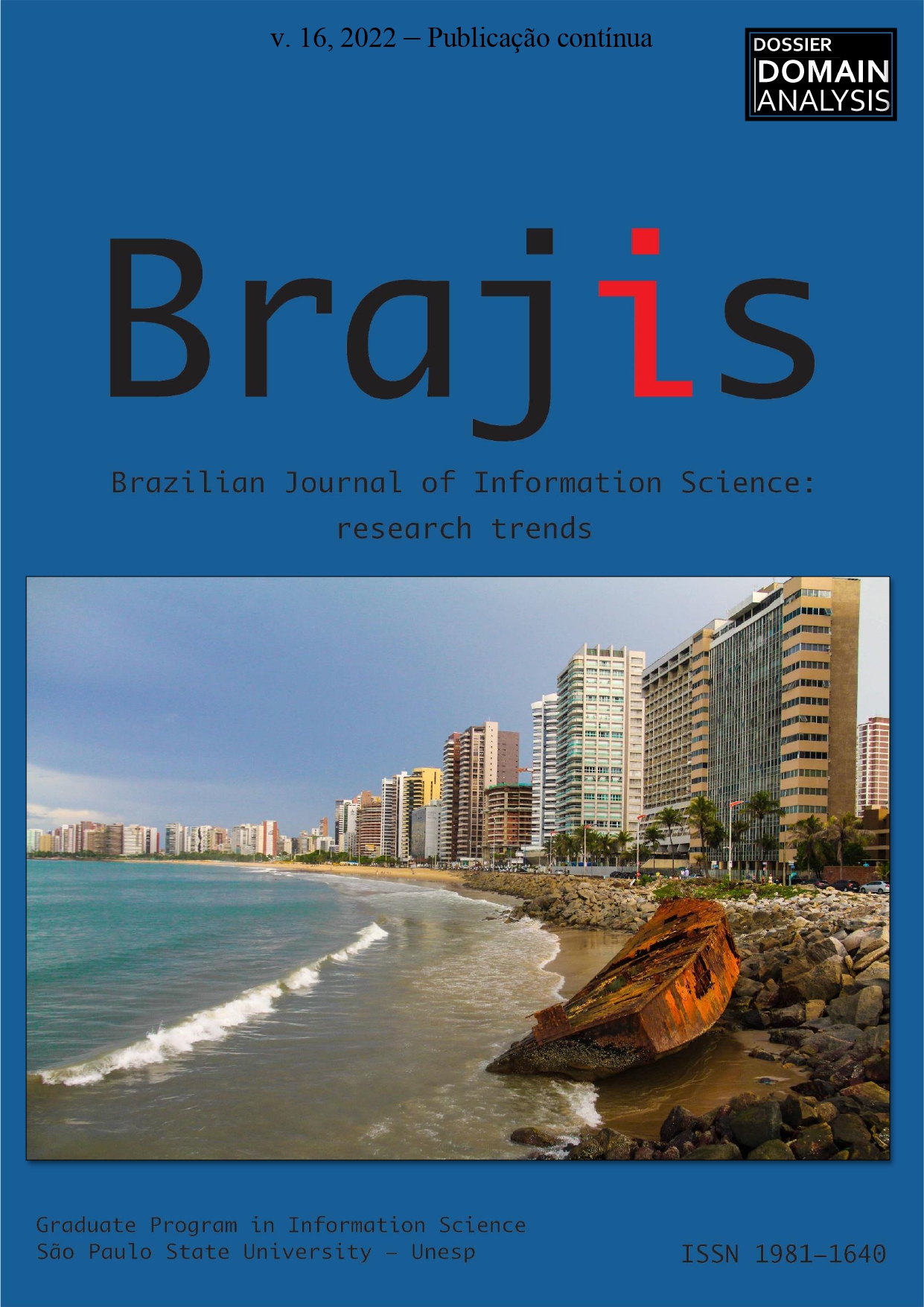A Social Network Built from Digital Documents from the UFT Website
DOI:
https://doi.org/10.36311/1981-1640.2022.v16.e02162Keywords:
Social Networks, Complex Networks, Relations, Document Analysis, GraphAbstract
This research proposes the exemplification of a mapping of a social network. Thus, in this research, a social network of entities related to the Federal University of Tocantins (UFT) was reproduced using 13 thousand digital documents. To map the connections of the documents and generate the graph, it was used as a criterion that if the name of two persons are in the same document they have a connection, for each different file that has a connection, this relationship is strengthened. The graph had 114,405 vertices, and 21,081,984 edges. Of the ten most central nodes, the entities found occupied, or still occupy, the following functions: dean, campus director, pro-rector and vice-rector. In this way, the reproduction of a complex network of relationships is considered, with the use of digital documents as a viable alternative for the mapping of social interactions of nuclei that are probably not mapped by conventional online social networks. Thus, the graph created by this social network model, built from digital text documents, presents an alternative to map relationships between entities, which can have different purposes.
Downloads
References
Agneessens, F., Borgatti, S. P.,and Everett, M. G. "Geodesic based centrality: Unifying the local and the global". Social Networks, n. 49, May 2017, pp. 12–26.
Luz de Araujo, P. H., de Campos, T. E., de Oliveira, R. R. R., Stauffer, M., Couto, S., and Bermejo, P. "LeNER-Br: a dataset for named entity recognition in Brazilian legal text". In International Conference on the Computational Processing of Portuguese (PROPOR), Lecture Notes on Computer Science (LNCS), Canela, RS, Brazil. Springer. 2018, pp. 313–323,
Barabási, A. L., and Bonabeau, E. "Scale-Free Networks". Scientific American, n. 288, 2003, pp. 60–69. doi:10.1038/scientificamerican0503-60
Boccaletti, S., Latora, V., Moreno, Y., Chavez, M., and Hwang, D. U. "Complex networks: Structure and dynamics". Physics Reports, n. 424, 2006, pp. 175-308. doi:https://doi.org/10.1016/j.physrep.2005.10.009
Bollobás, B., Janson, S., and Riordan, O. "Sparse random graphs with clustering". Random Structures & Algorithms, n. 38, 2011, pp. 269–323.
Bonacich, P. "Power and Centrality: A Family of Measures". American Journal of Sociology, n. 92, 1987, pp. 1170–1182. doi:10.1086/228631
Borgatti, S. P. "Identifying sets of key players in a social network". Computational & Mathematical Organization Theory, n. 12, 2006, pp. 21–34.
Borgatti, S. P., and Everett, M. G. "A graph-theoretic perspective on centrality". Social networks, n. 28, 2006, pp. 466–484.
BRASIL. Constituição da República Federativa do Brasil. Senado Federal, 1988.
Clauset, A., Shalizi, C. R., and Newman, M. E. "Power-law distributions in empirical data". SIAM Review, n. 51, 2009, pp. 661–703. doi:10.1137/070710111
Coppin, B. Inteligência Artificial. Rio de Janeiro: LTC, 2017.
Fischetti, M. Physics or Fashion? What Science Lovers Link to Most: Science aficionados have odd and surprising interests. Scientific American, 2011, https://www.scientificamerican.com/article/graphic-science-science-lovers-web-traffic/
Lample, G., Ballesteros, M., Subramanian, S., Kawakami, K., and Dyer, C. "Neural Architectures for Named Entity Recognition". arXiv:1603.01360 [cs], 2016, http://arxiv.org/abs/1603.01360
Marteleto, R. M. "Redes Sociais, Mediação e Apropriação De Informações: situando campos, objetos e conceitos na pesquisa em Ciência da Informação". Revista Telfract, n. 1, 2018.
Mendonça, J., Macedo, H., Bisbo, T., Santos, F., Silva, N., and Barbosa, L. "Paramopama: a Brazilian-Portuguese corpus for named entity recognition". 12th National Meeting on Artificial and Computational Intelligence (ENIAC) 2015.
Nadeau, D., and Sekine, S. "A survey of named entity recognition and classification". Linguisticae Investigationes, n. 30, 2007, pp. 3–26.
http://www.ingentaconnect.com/content/jbp/li/2007/00000030/00000001/art00002
Newman, M. E. "A measure of betweenness centrality based on random walks". Social Networks, n. 27, 2005, pp. 39-54. doi: https://doi.org/10.1016/j.socnet.2004.11.009
Pastor-Satorras, R., and Vespignani, A. Evolution and structure of the Internet: A statistical physics approach. Cambridge University Press, 2007.
Presidência da República. Detalhamento dos Servidores Públicos por Órgão, Portal da Transparência, 2021, https://www.portaltransparencia.gov.br/servidores/orgao?ordenarPor=orgaoSuperiorLotacaoSIAPE&direcao=asc
Recuero, R. Redes sociais na Internet. Porto Alegre: Sulina, 2011.
Universidade Federal do Tocantins. Resolução nº 21, de 26 de outubro de 2016. Guia de Redação e Formatação de Comunicações Oficiais, 2016, pp. 18.
Wasserman, S., Faust, K., & others. Social network analysis: Methods and applications (Vol. 8). Cambridge university press, 1994.
Watts, D. J. Small worlds: the dynamics of networks between order and randomness. Princeton university press, 2004.
Downloads
Published
Issue
Section
License
Copyright (c) 2022 Gentil Barbosa, David Nadler Prata, Rogério Nogueira de Sousa, Rafael Murta, Elencarlos Soares Silva

This work is licensed under a Creative Commons Attribution-ShareAlike 4.0 International License.
When submitting an article, the authors retain the copyright of the article, giving full rights to the Brazilian Journal of Information Science to publish the text.
The author(s) agree that the article, if editorially accepted for publication, shall be licensed under the Creative Commons Attribution-ShareAlike 4.0 International (CC BY-SA 4.0) license (http://creativecommons.org/licenses/by-sa/4.0) Readers/users are free to: - Share — copy and redistribute the material in any medium or format - Adapt — remix, transform, and build upon the material for any purpose, even commercially. The licensor cannot revoke these freedoms as long as you follow the license terms. Under the following terms: - Attribution — You must give appropriate credit, provide a link to the license, and indicate if changes were made. You may do so in any reasonable manner, but not in any way that suggests the licensor endorses you or your use. - ShareAlike — If you remix, transform, or build upon the material, you must distribute your contributions under the same license as the original. No additional restrictions — You may not apply legal terms or technological measures that legally restrict others from doing anything the license permits. Notices: - You do not have to comply with the license for elements of the material in the public domain or where your use is permitted by an applicable exception or limitation. - No warranties are given. The license may not give you all of the permissions necessary for your intended use. For example, other rights such as publicity, privacy, or moral rights may limit how you use the material.
 Creative Commons Attribution-ShareAlike 4.0 International License.
Creative Commons Attribution-ShareAlike 4.0 International License.







